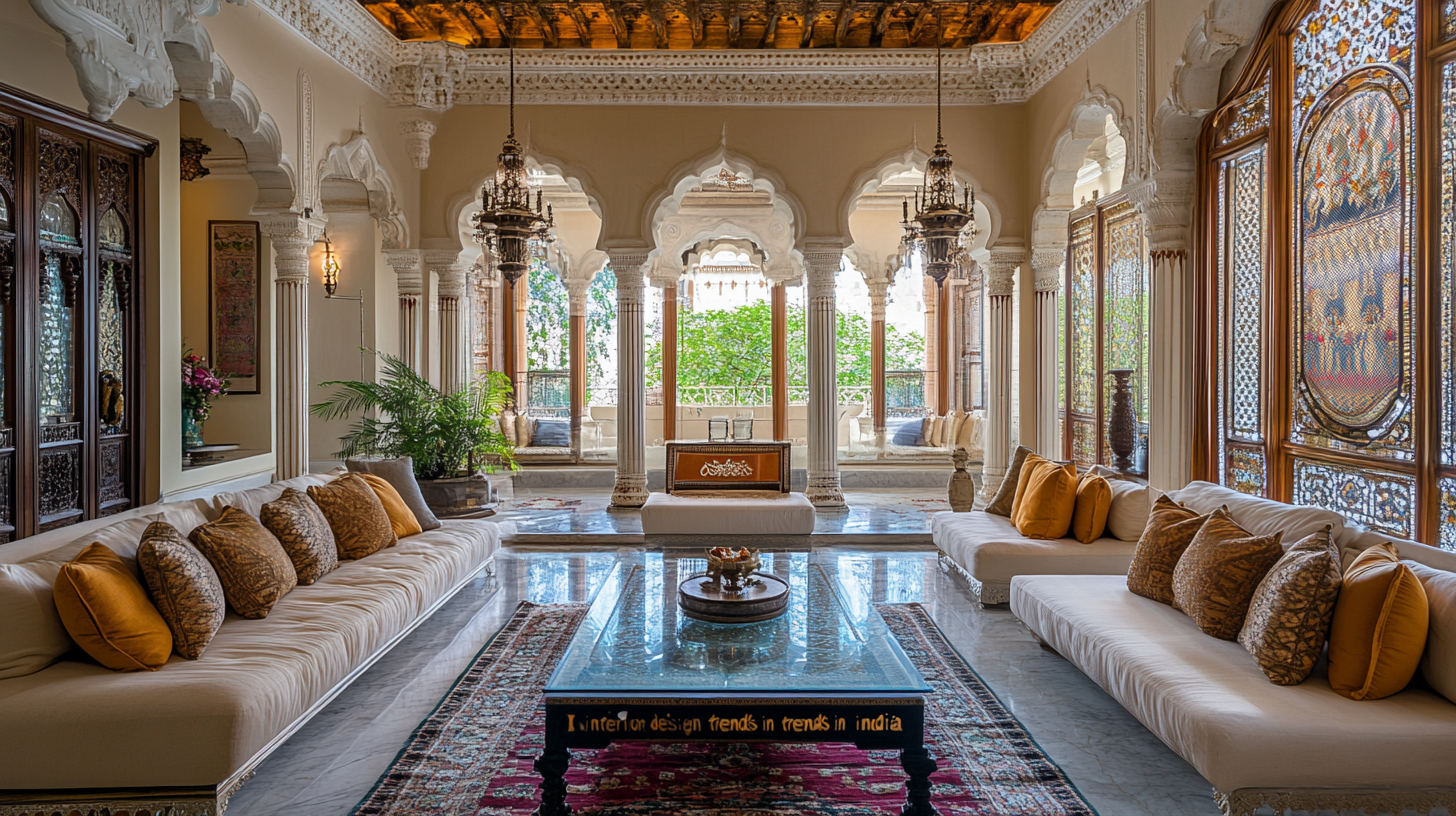
Top 10 Interior Design Trends for Indian Homes in 2025: A Comprehensive Guide
Imagine stepping into your home and feeling an instant sense of calm a space that not only reflects the vibrant tapestry of Indian culture but also speaks the language of modern sustainability and technology.
As rapid urbanization reshapes our cities and a renewed focus on eco-friendly living takes center stage, Indian homes in 2025 are evolving into environments that are as thoughtful as they are beautiful.
In this post, we’ll explore the top 10 interior design trends that are making waves in India this year.
Whether you’re a homeowner, villa owner, apartment dweller, or someone seeking a consultation for your next residential project, this guide is your roadmap to creating a space that’s both future-forward and deeply personal.
I’ve woven together expert insights, practical tips, and a touch of personal experience to help you navigate these trends with ease and style.
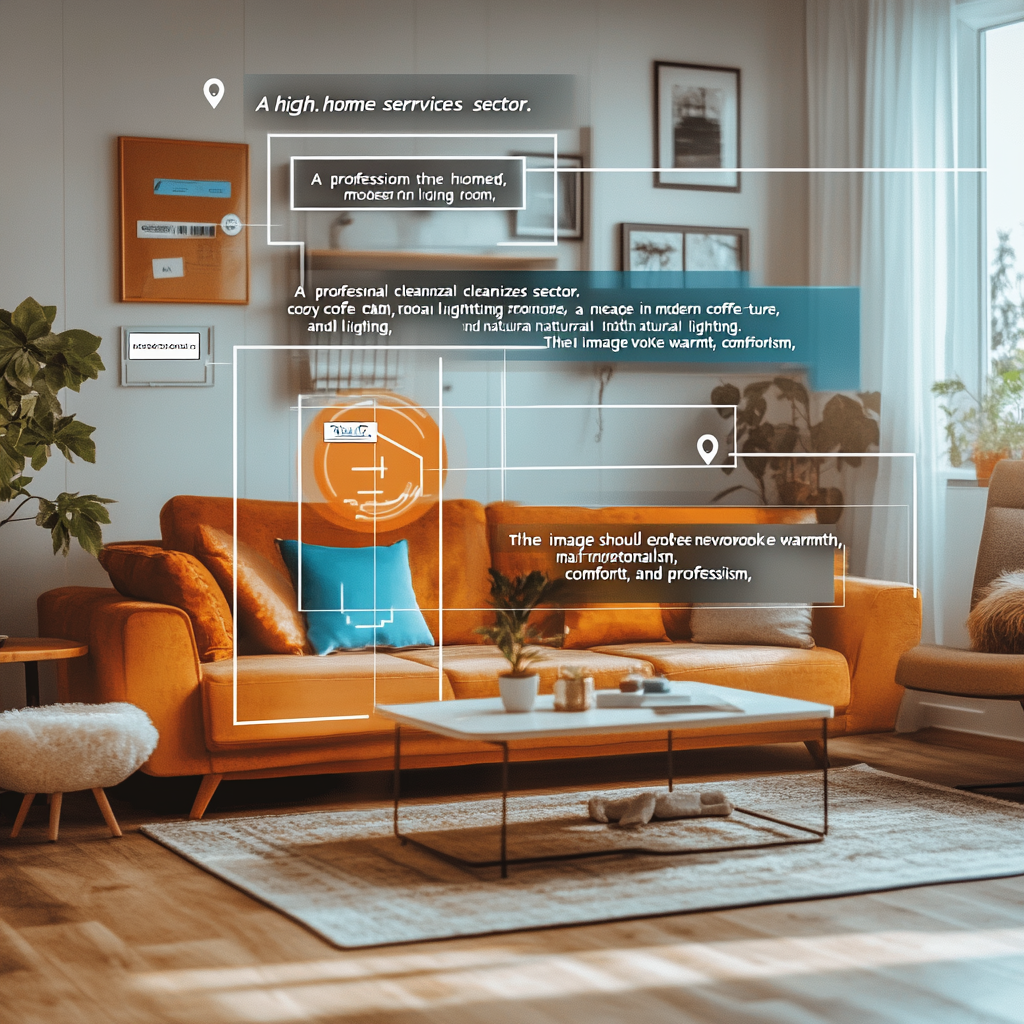
1. Sustainable & Eco-Conscious Materials
Why This Trend is Taking Off
Our growing environmental awareness is not just a global phenomenon—it’s influencing the way we design our living spaces. In India, the call for ethical design is louder than ever. Homeowners are now prioritizing materials that are not only beautiful but also environmentally friendly.
The Indian Twist
Reclaimed Wood & Terracotta: Imagine a living room with bespoke furniture crafted from reclaimed wood, paired with terracotta accents that remind you of traditional Indian pottery.
Bamboo & Local Stone: Bamboo, known for its strength and sustainability, is being used alongside locally sourced stones like Kota and Kadappa to create earthy yet contemporary interiors.
Practical Tips
Eco-Friendly Finishes: Opt for low-VOC paints and recycled metal accents that add a modern flair without compromising on environmental ethics.
DIY Inspiration: Consider repurposing old furniture with eco-friendly stains and natural varnishes—a fun project that gives your home a unique story.
A Quick Comparison Table
| Material | Benefits | Indian Application |
|---|---|---|
| Reclaimed Wood | Eco-friendly, unique character | Custom furniture, accent walls |
| Terracotta | Durable, naturally textured | Flooring, decorative pots |
| Bamboo | Sustainable, lightweight, strong | Furniture, room dividers |
| Local Stone | Natural, region-specific, sturdy | Countertops, feature walls |
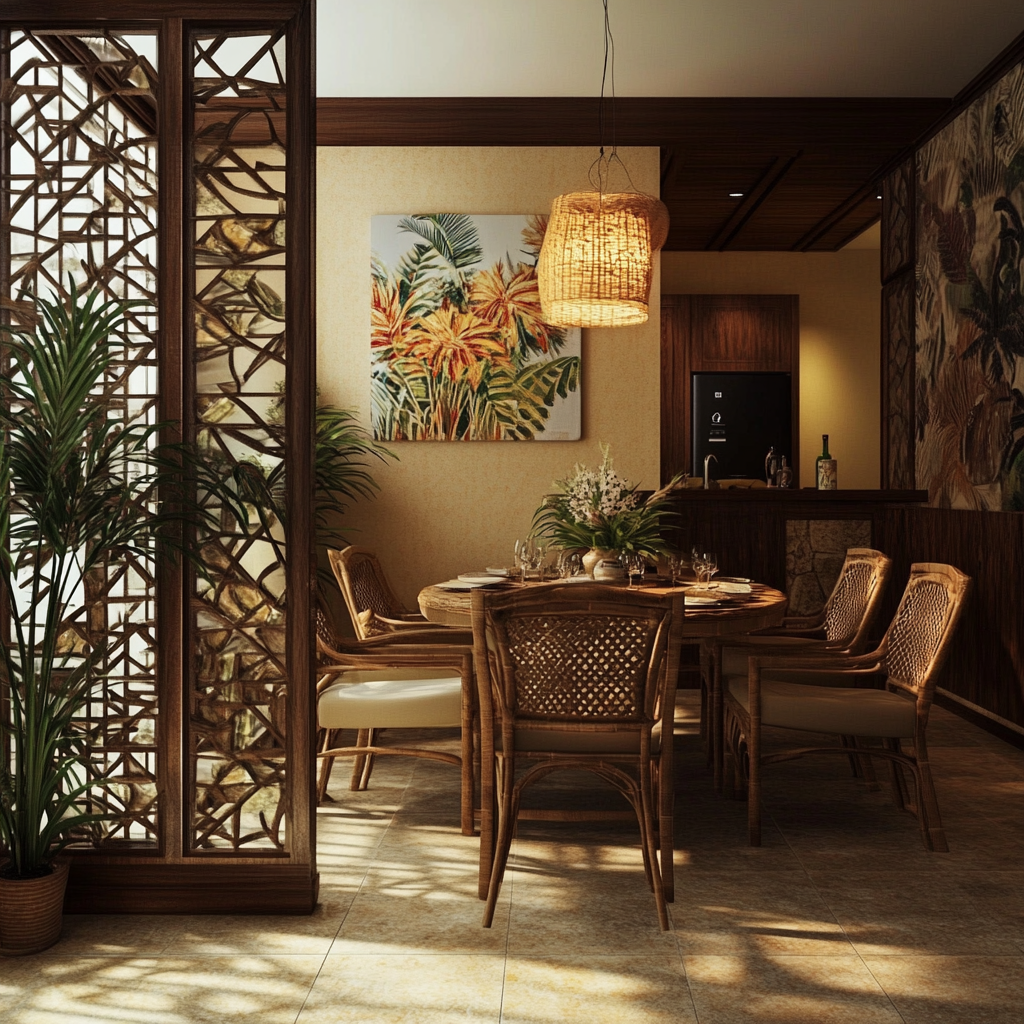
2. Biophilic Design: Bringing Nature Indoors
The Trend Explained
With urban stress on the rise, the need to reconnect with nature has never been more urgent. Biophilic design is all about bridging the gap between the indoors and the natural world. It’s a design philosophy that encourages the inclusion of natural elements within our homes.
How It Works in Indian Homes
Indoor Vertical Gardens: Picture a compact apartment balcony transformed into a lush vertical garden—complete with native medicinal plants like tulsi and aloe vera.
Maximizing Natural Light: Large windows, skylights, and strategically placed mirrors can amplify natural light, creating an inviting atmosphere reminiscent of traditional Indian courtyards.
Why You’ll Love It
Stress Reduction: Studies show that incorporating elements of nature into your home can significantly reduce stress and boost overall well-being.
Aesthetic Appeal: The natural textures and vibrant greens offer a refreshing contrast to modern minimalism, giving your space a warm, welcoming vibe.
Design Tips
Use jute or cane furnishings to add an organic touch.
Consider living walls that double as air purifiers.
Place water features strategically for a calming ambiance.
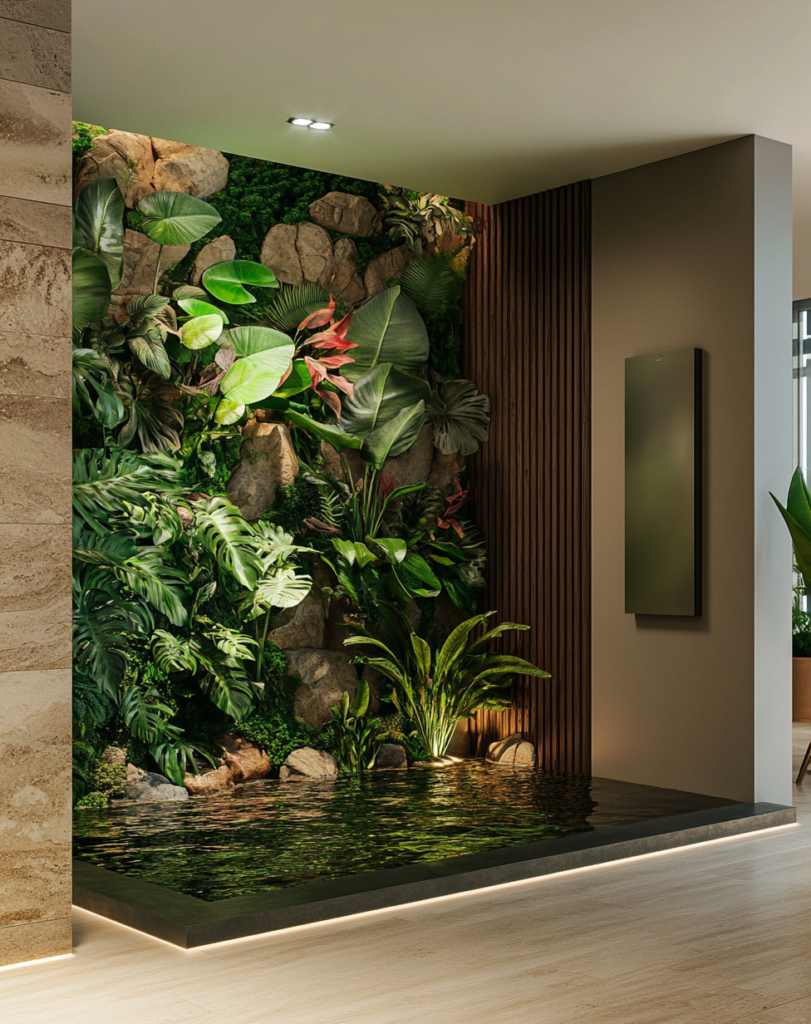
3. Smart Home Technology Integration
Embracing the Future
Gone are the days when smart home technology was a luxury reserved for futuristic sci-fi movies. Today, it’s an accessible reality that enhances everyday living while adding a sleek, modern touch to your home.
Indian Relevance
Voice-Controlled Systems: In homes across India, voice-controlled lighting and smart speakers are becoming the norm. Imagine controlling your living room’s ambiance with a simple command.
AI-Assisted Appliances: Kitchens are evolving with modular designs integrated with AI-assisted appliances that make meal prep a breeze.
Must-Have Gadgets
Smart Locks: Enhance your home’s security with smart locks that let you monitor entry points remotely.
Automated Curtains: Keep your interiors climate-controlled and energy-efficient with motorized curtains that adjust according to the sun’s position.
A Day in the Life
I remember the first time I walked into a home where the lights dimmed automatically at sunset and the music system adjusted to the evening chill—it felt like stepping into a futuristic yet comfortable haven.
Quick Tech Checklist
Smart Lighting: LED bulbs with voice control
Security: Smart locks and surveillance cameras
Climate Control: Automated window treatments and thermostats
Kitchen: Modular, AI-assisted appliances
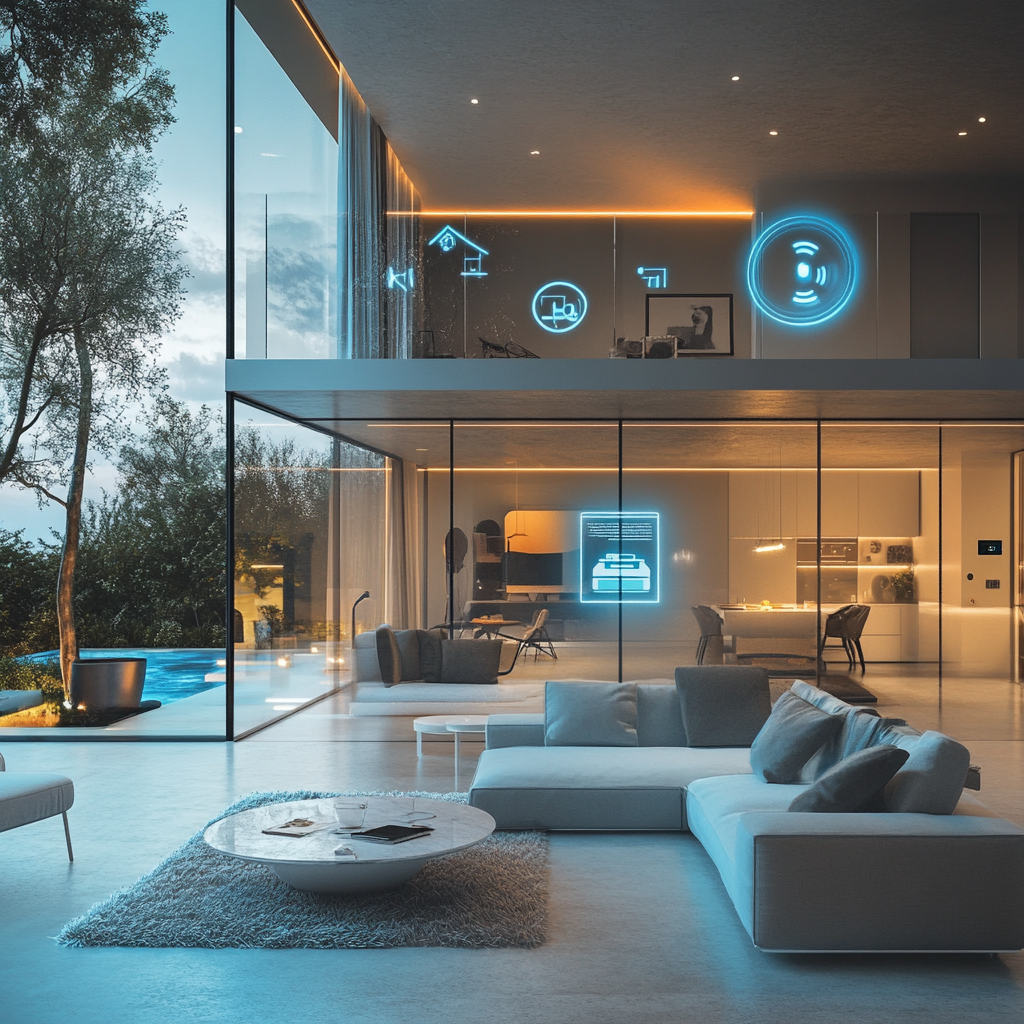
4. Modular & Space-Saving Furniture
Why It’s Trending
With urban living spaces becoming more compact, the need for multifunctional and space-saving furniture is more critical than ever. This trend is all about doing more with less—creating flexibility in your home without compromising on style.
Innovations in India
Convertible Furniture: From sofa-beds to foldable dining tables, Indian designers are embracing furniture that transforms to suit various needs.
Under-Stair Storage: Think of those empty spaces under the staircase—they’re now a canvas for innovative storage solutions, perfect for organizing everything from books to seasonal decor.
Material Matters
Engineered Wood & Metal Frames: These materials are not only durable but also lend a sleek, modern look to your interiors. Their lightweight nature makes them ideal for modular designs.
Tips for a Smart Setup
Invest in Custom Pieces: Tailor your furniture to your specific needs, ensuring that every inch of your space is utilized effectively.
Opt for Multi-Purpose: Choose pieces that serve more than one function, like a coffee table that doubles as storage.
Modular Furniture Comparison
| Furniture Type | Key Feature | Ideal For |
|---|---|---|
| Convertible Sofa-Bed | Dual functionality | Small living rooms, apartments |
| Foldable Dining Table | Space-saving design | Compact dining areas |
| Under-Stair Storage | Customizable compartments | Maximizing unused space |
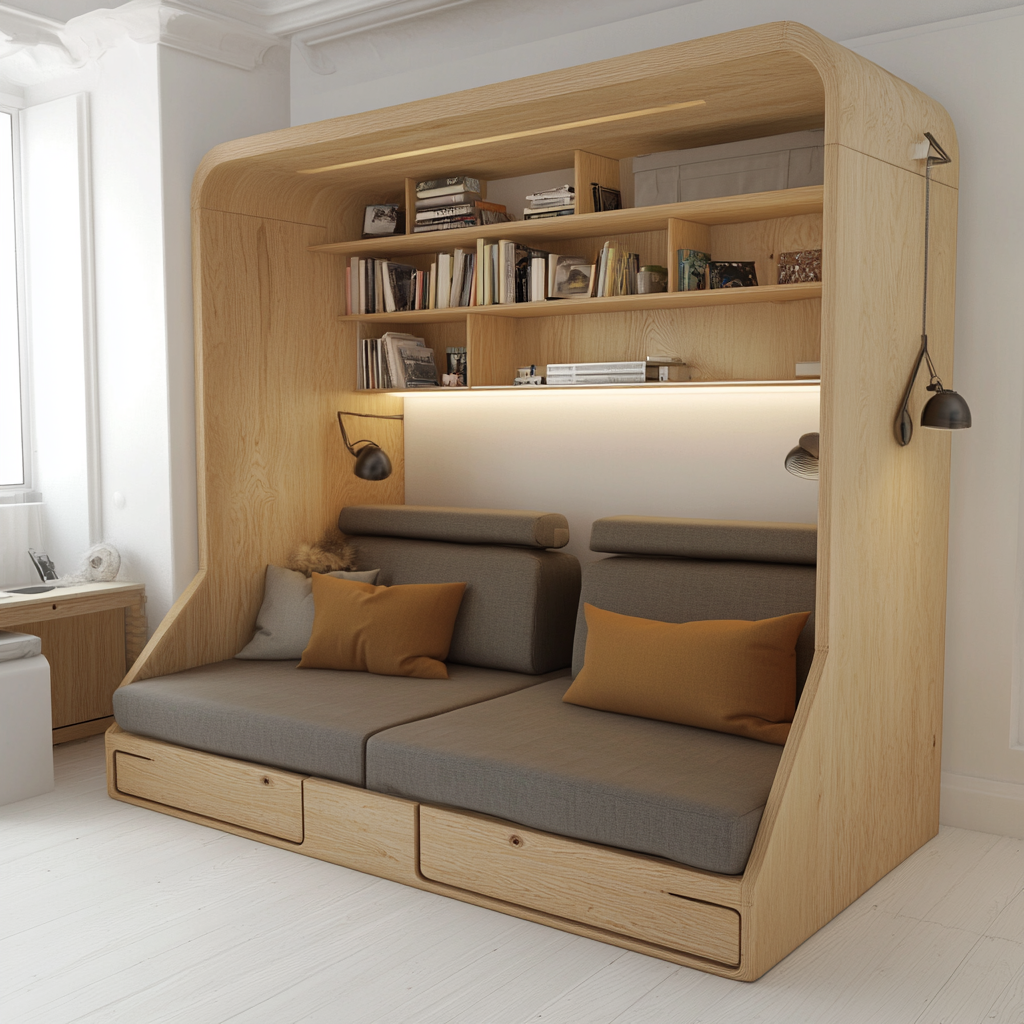
5. Earthy & Warm Color Palettes
The Color Shift
After the intense and sometimes sterile minimalism of past years, homeowners are gravitating towards earthy and warm color palettes. This shift is not only about aesthetics—it’s about creating a sanctuary that feels inviting and timeless.
Indian Inspirations
Terracotta Reds & Ochre Yellows: These colors evoke the rustic charm of Indian landscapes and ancient architecture.
Sage Greens & Muted Indigo: Soft, calming hues that bring a sense of serenity to any room, perfect for unwinding after a hectic day.
Styling Tips
Bold Accents: Pair these earthy tones with brass or copper accents for a touch of modern elegance.
Hand-Painted Motifs: Incorporate traditional hand-painted motifs to add layers of cultural depth and personal narrative to your space.
A Palette in Practice
Imagine a living room where walls are adorned in a warm terracotta hue, offset by plush furniture in muted indigo and accented with brass decor. The result? A space that’s both contemporary and deeply rooted in tradition.
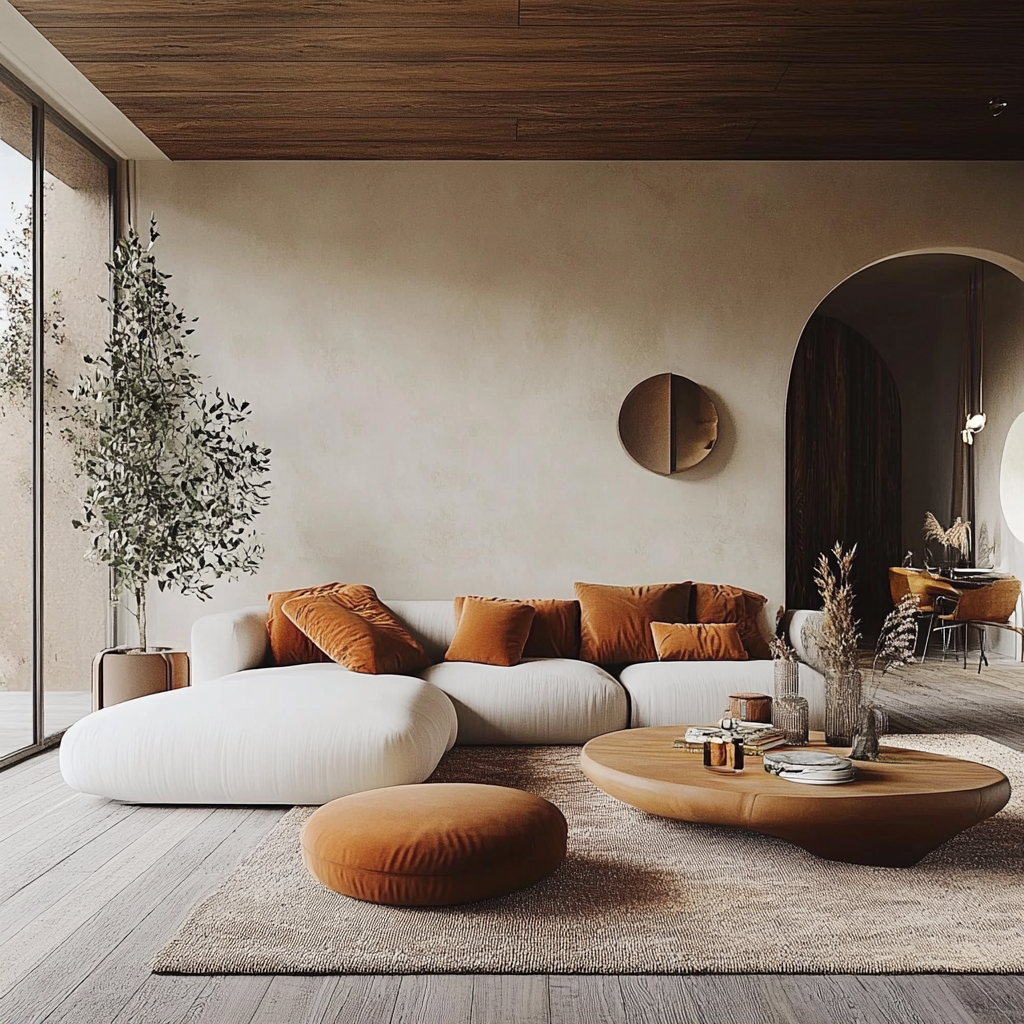
6. Multifunctional & Flexible Spaces
The Evolution of Home Design
The shift to work-from-home and evolving family dynamics have forced many of us to rethink the concept of a “room.” Today, every square foot counts, and spaces are no longer confined to a single function.
Creative Indian Solutions
Room Dividers with Jaali Patterns: Traditional jaali patterns, with their intricate designs, can be used as sliding partitions to create flexible workspaces or private areas within open-plan homes.
Convertible Home Offices: With more people working remotely, the demand for dedicated home office spaces that can seamlessly transform into guest rooms or relaxation zones is on the rise.
Practical Design Ideas
Loft Beds and Integrated Storage: Particularly in apartments and smaller homes, loft beds not only save space but also provide additional storage or study areas underneath.
Movable Furniture: Lightweight, easily movable furniture can adapt to your daily needs, making it easy to switch from a social space to a productive workspace in a matter of minutes.
Table: Space-Saving Solutions Overview
| Space Challenge | Innovative Solution | Indian Twist |
|---|---|---|
| Limited Room Areas | Sliding partitions with traditional jaali | Enhances privacy without sacrificing style |
| Home Office Needs | Convertible workspaces | Integrates cultural design elements |
| Storage Constraints | Under-stair storage & loft beds | Maximizes every inch of space |
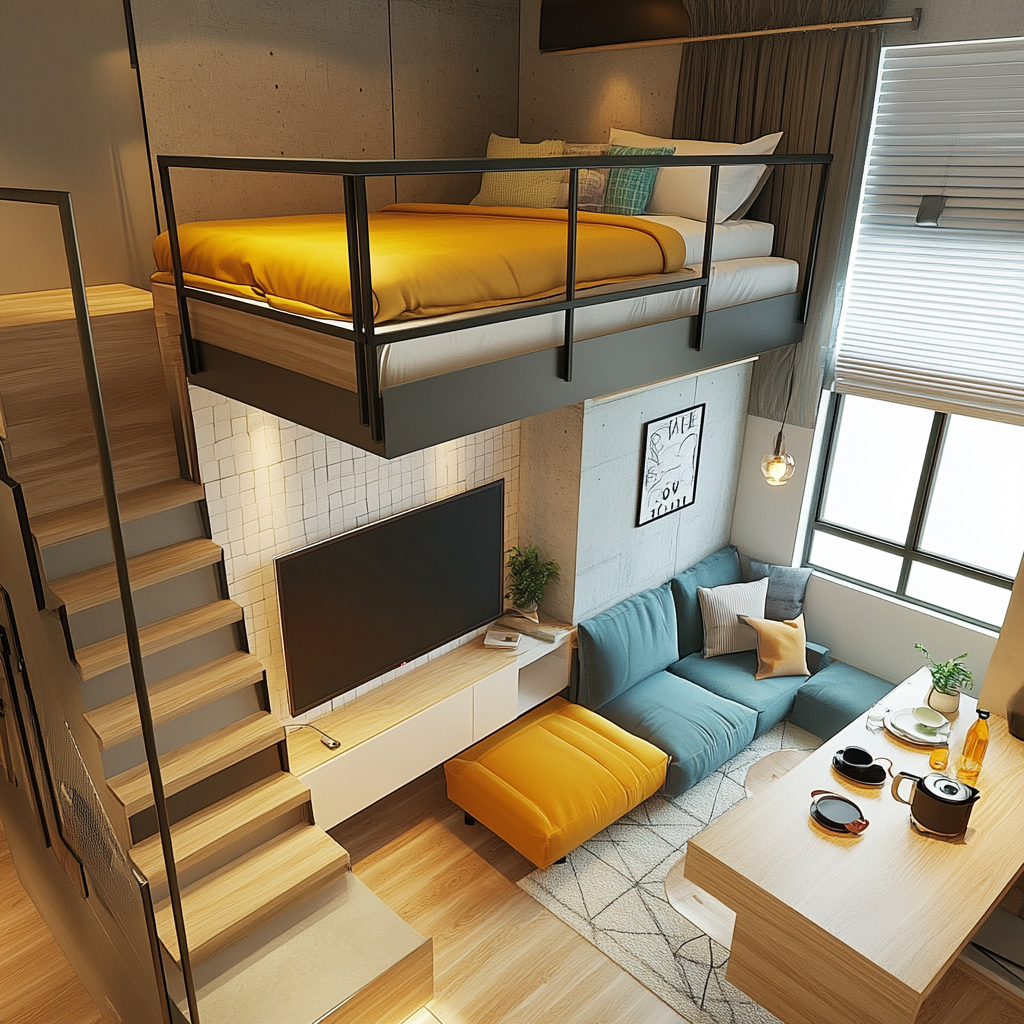
7. Revival of Traditional Craftsmanship (Indo-Modern Fusion)
The Cultural Renaissance
There’s a beautiful resurgence of pride in traditional craftsmanship in India. Modern design no longer shuns the rich heritage of handcrafts and artisanal techniques.
Instead, it celebrates them by fusing contemporary minimalism with traditional aesthetics—creating an Indo-modern fusion that is both sophisticated and soulful.
What It Looks Like
Hand-Block Printed Upholstery: Infuse your seating with stories from the past by choosing upholstery that features intricate hand-block prints, a nod to centuries-old Indian artistry.
Brass Inlay Tables: Combining modern lines with traditional brass inlay work, these tables serve as conversation starters, blending form and function seamlessly.
Warli-Art Accent Walls: Incorporate local art forms like Warli painting to bring an authentic cultural narrative into your space.
Expert Tip
Balance is key pair bold traditional elements with a minimalist backdrop to avoid overwhelming your space.
I once visited a beautifully curated home where a Warli-art wall acted as a subtle yet powerful tribute to Indian heritage, complemented by simple, modern furnishings. It was a masterclass in the art of fusion.
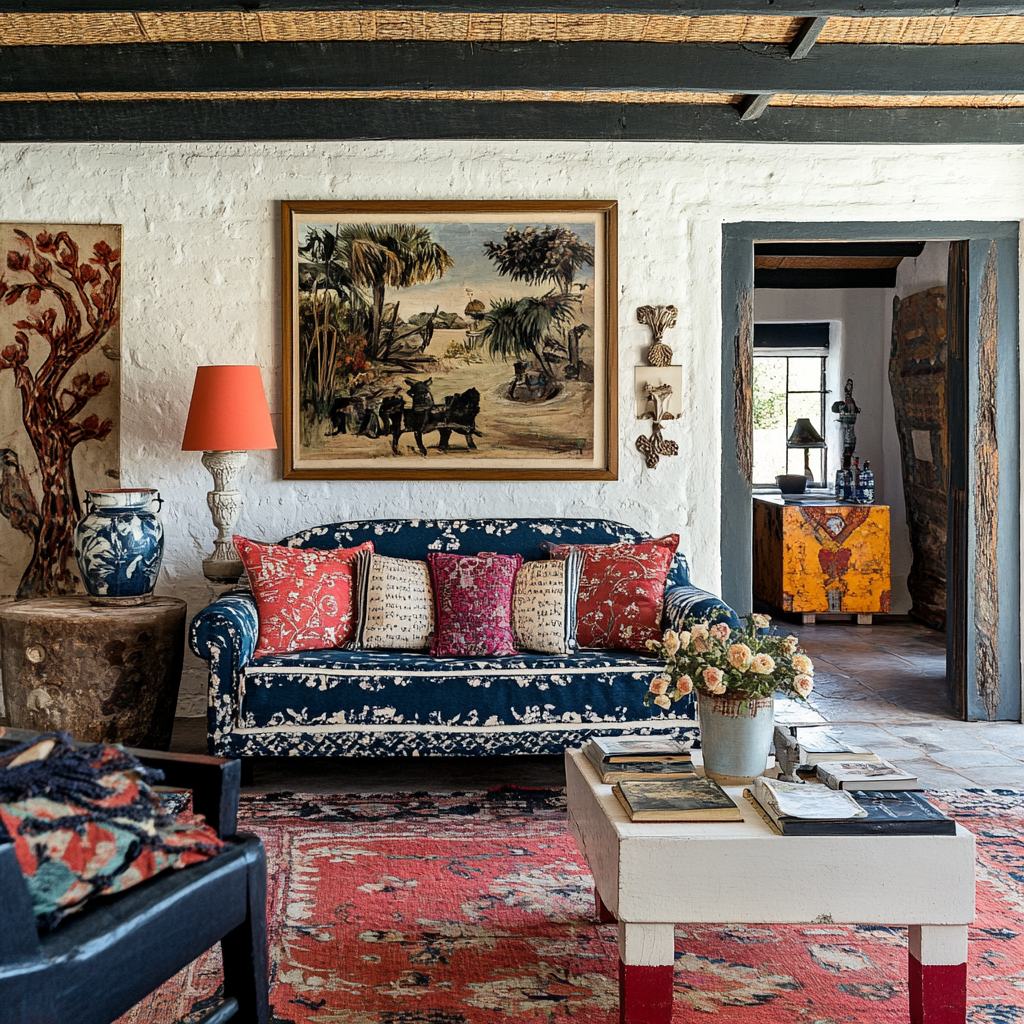
8. Bold Maximalism with Cultural Narratives
Why Maximalism is Making a Comeback
After years of strict minimalism, homeowners are embracing maximalism—an approach that celebrates layered textures, bold colors, and the art of storytelling through decor.
This trend is about rejecting the “less is more” mantra and instead curating spaces that are rich with personal and cultural narratives.
Bringing Indian Stories to Life
Layered Textiles: Mix and match fabrics such as ikat and kantha, or blend vintage and modern prints to create a tapestry of visual interest.
Vintage Kolam-Inspired Tiles: Incorporate tiles that echo the patterns of traditional kolam designs, infusing your floors and walls with a burst of cultural energy.
Mixed-Era Decor: Combine antiques with contemporary pieces—imagine a modern sofa juxtaposed against a centuries-old handcrafted coffee table.
How to Nail It
Intentional Clutter: Maximalism isn’t about chaos—it’s about purposeful layering. Choose items that hold meaning, and arrange them so that each piece contributes to the overall story of your home.
Bold but Balanced: Ensure that while the decor is bold, the overall space remains uncluttered. Use neutral backdrops to let your statement pieces shine.
A Personal Anecdote
I recall a client who transformed their living space into a living museum of their family’s legacy each piece told a story, from heirloom textiles to contemporary art. The result was a maximalist haven that felt both curated and deeply personal.
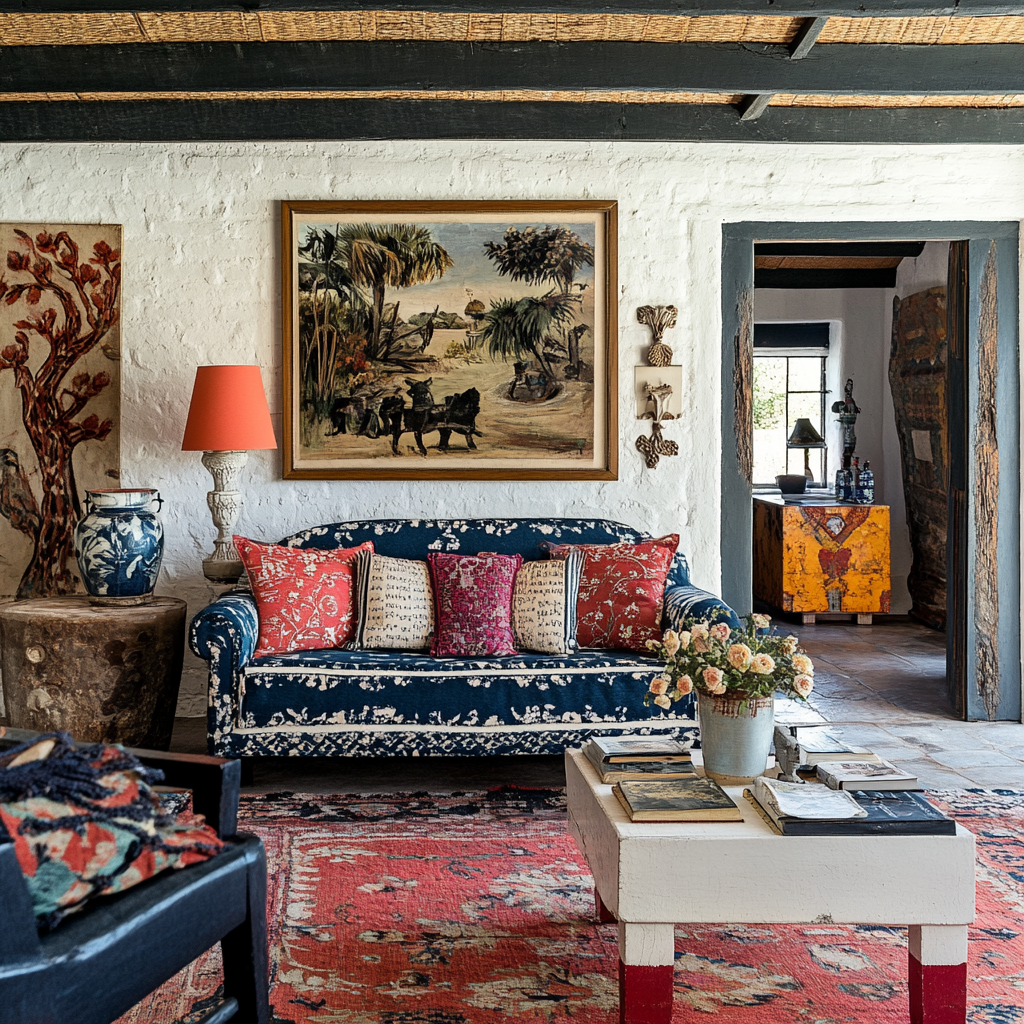
9. Wellness-Centric Design
Prioritizing Health in Home Design
Post-COVID, our homes have taken on new roles—not just as places to live, but as sanctuaries for mental and physical well-being. Wellness-centric design is about creating environments that promote a healthy lifestyle and nurture the mind, body, and soul.
Indian Adaptations for Wellness
Dedicated Yoga Nooks: Carve out a serene corner for yoga or meditation. A small, sunlit room with calming colors and soft lighting can transform into your personal wellness retreat.
Air-Purifying Greenery: Choose plants that are known to cleanse indoor air, like snake plants and peace lilies, alongside traditional medicinal herbs like tulsi.
Vastu-Compliant Layouts: Many homeowners are revisiting the ancient science of Vastu Shastra to create spaces that are balanced and harmonious.
Materials and Finishes
Non-Toxic Finishes: Select eco-friendly, non-toxic finishes and natural fibers that reduce allergens and promote a healthy indoor environment.
Circadian Lighting: Lighting systems that mimic natural daylight can help regulate sleep cycles and improve overall well-being.
Wellness Checklist
Yoga Corner Setup: A calm, clutter-free area with mats, cushions, and soft ambient lighting.
Air Quality: Indoor plants strategically placed; consider an air purifier if needed.
Layout Balance: Ensure that your space adheres to both modern ergonomic design and traditional Vastu principles.
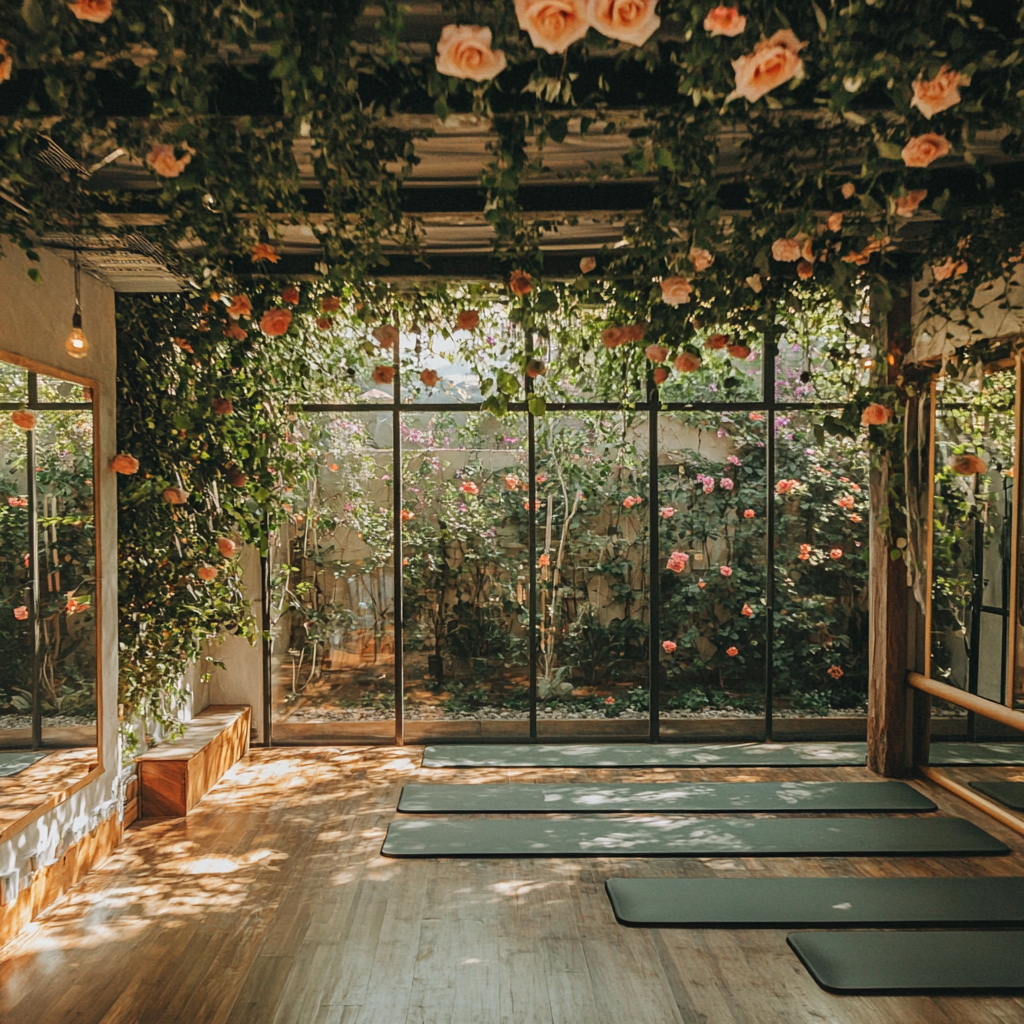
10. Textured Wall Finishes & Organic Shapes
The Tactile Revolution
In an era dominated by sleek, minimalist surfaces, there’s a growing appetite for textures and organic shapes that invite touch and stimulate the senses. Textured walls and curvilinear forms are redefining the way we experience interior spaces, adding depth and character to every corner.
Indian Execution
Lime Plaster (Chuna): Traditional lime plaster finishes offer a rustic, aged look that contrasts beautifully with contemporary furnishings.
Exposed Brick and 3D Clay Tiles: These elements create an interplay of shadows and light, enhancing the tactile quality of your walls.
Curved Furniture: Think arched niches, oval mirrors, and rounded furniture that softens the edges of your space, making it feel more welcoming and organic.
Design Recommendations
Mix and Match Textures: Don’t be afraid to combine different textures—smooth surfaces paired with rough, natural materials create a dynamic visual experience.
Organic Geometry: Incorporate shapes that mimic nature. Curved walls or furniture can evoke the gentle flow of water or the organic contours of a leaf.
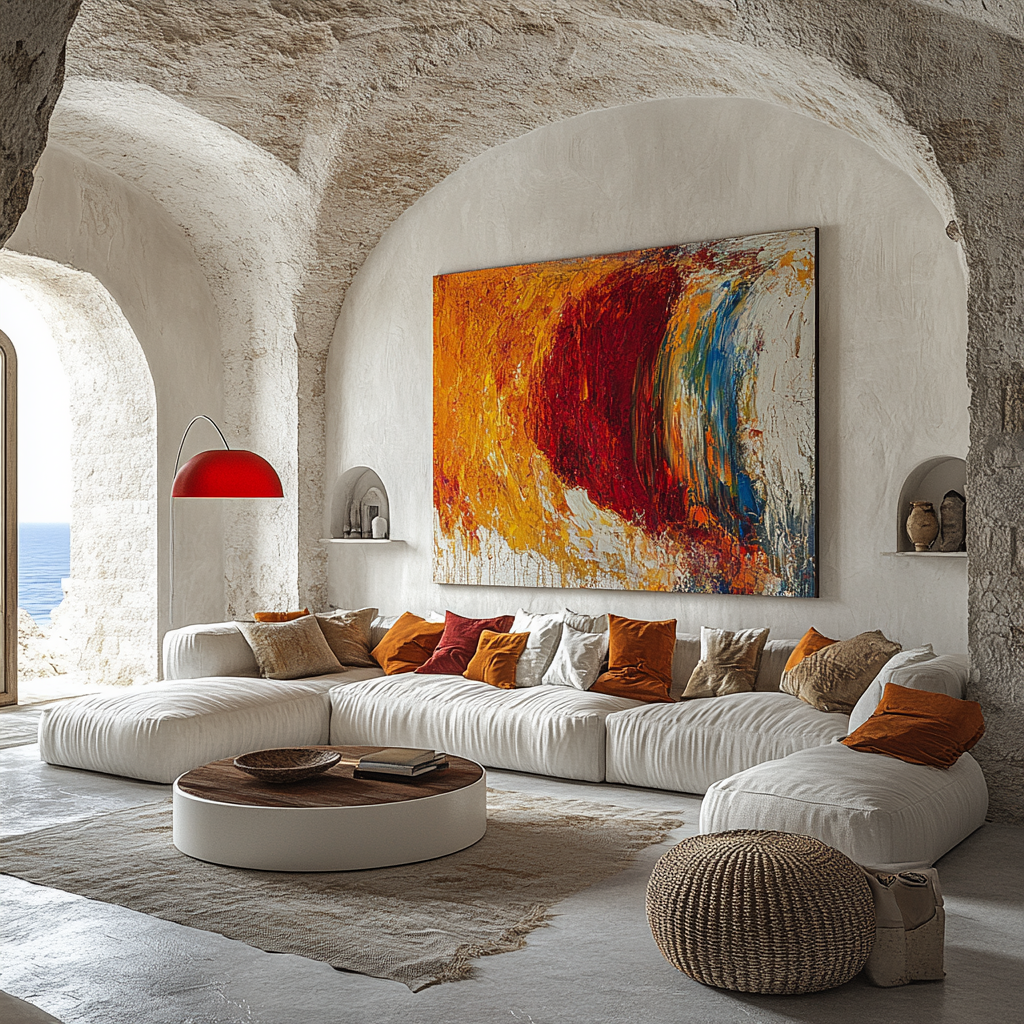
Frequently Asked Questions (FAQs)
Q1: How can I integrate these trends into a small apartment?
A: Small spaces benefit immensely from multifunctional design. Use modular furniture and sliding partitions with traditional jaali patterns to create flexible zones. Incorporate biophilic elements like indoor vertical gardens to add life without consuming much space.
Q2: Is smart home technology expensive to install in an Indian home?
A: The cost of smart home integration has come down significantly. You can start small with voice-controlled lighting and smart locks, gradually upgrading your home with AI-assisted appliances as your budget allows.
Q3: What sustainable materials are most recommended for Indian climates?
A: Reclaimed wood, bamboo, and locally sourced stones such as Kota and Kadappa are excellent choices. They are not only environmentally friendly but also durable in India’s diverse climates.
Q4: How do I balance traditional craftsmanship with modern aesthetics?
A: The key is in the fusion. Use traditional elements like hand-block prints or Warli art as accent features against minimalist, modern backdrops. This creates a sophisticated look that respects heritage without overwhelming the space.
Q5: Can these trends be adapted for both villas and apartments?
A: Absolutely. The beauty of these trends is their versatility. Whether you’re working with a sprawling villa or a cozy apartment, you can tailor each element to fit your space and lifestyle.
Conclusion: Blending Trends with Personal Style
At the end of the day, your home is a canvas for self-expression. While these trends provide a roadmap for a stylish, future-ready space, the most important ingredient is you.
Whether you opt for sustainable materials, smart technology, or a maximalist mix of cultural narratives, remember that your home should reflect your unique personality and values.
A Few Parting Thoughts:
Experiment: Don’t hesitate to mix two or three trends. Perhaps sustainable materials paired with biophilic design and a touch of smart tech can create your ideal living space.
Personal Touch: Every design decision should resonate with your lifestyle and heritage. Your home is an evolving story—make sure it’s one you’re proud to share.
Stay Inspired: Follow design influencers, visit local exhibitions, and keep experimenting with new ideas. Inspiration is everywhere—from the busy streets of Mumbai to the tranquil backwaters of Kerala.
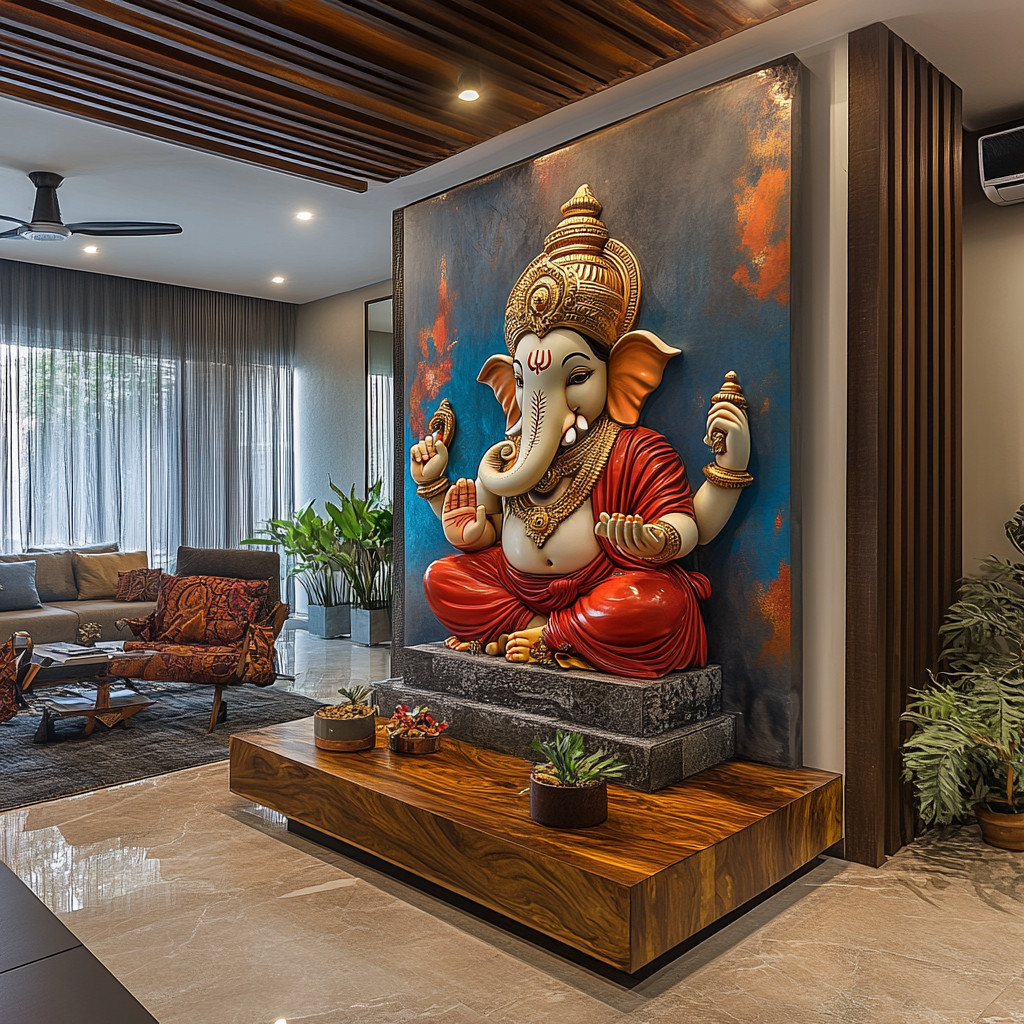
Call-to-Action
Are you ready to reimagine your space? I invite you to explore these trends further and see how they can transform your home into a sanctuary that’s both future-forward and deeply personal.
Final Thoughts
As we journey through 2025, the way we design our homes is evolving at a remarkable pace. Each trend outlined above not only addresses contemporary challenges be it environmental concerns, limited space, or the integration of modern technology but also pays homage to India’s rich cultural heritage.
The magic happens when you blend global influences with local tradition, creating a space that is uniquely yours.
I hope this guide inspires you to experiment boldly with new ideas, infuse your space with sustainable elegance, and, most importantly, create a home that mirrors who you are.
With thoughtful design choices, even the smallest apartment or the grandest villa can become a testament to modern living fused with traditional charm.

Leave a Reply